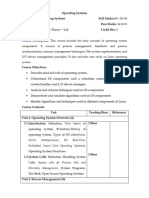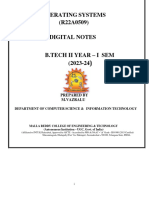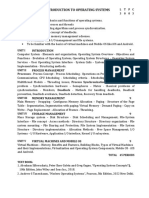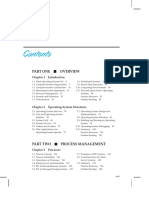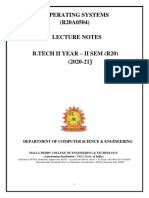Part A
Unit I
1. Define operating system
2. Batch and time sharing systems
3. API
4. Boot strap loader
5. Interrupt
6. Functions of OS
7. Kernal
8. Fork and Exec system calls
Unit II
1. Define process
2. Scheduling criteria
3. Semaphore, Mutex, Monitor
4. Thread – User and Kernal
5. Critical section problem
6. Necessary conditions for deadlock
7. CPU bounded and I/O bounched
8. Busy waiting
9. Process control block
10. Dispatch latency
Unit III
1. Context switch
2. Swapping
3. Why page sizes are always power of 2?
4. Page fault
5. Lazy swapper
6. Effective access time ( theory and problems)
7. Paging and segmentation problems
8. Virtual memory
9. TLB
10. Thrashing
Unit IV
1. File & Directory
2. Rotational latency, seek time, latency time
3. File attributes & operations
4. File Allocation table
5. File access methods
6. File allocation methods
7. Use of boot block
8. Belady’s anomaly
Unit V
1. Virtual machine
2. Layers of iOS.
� 3. Mobile operating systems
4. Virtualizations
Part B & C
Unit I
1. Operating system services
2. System calls and system programs
3. Structuring methods
Unit II
1. CPU scheduling (theory and problems)
2. Inter process communication
3. Classical problem of synchronization
4. Deadlock
5. Banker’s algorithm (theory and problems)
Unit III
1. Paging
2. Segmentation
3. Demand paging
4. Page replacement algorithms (theory and problems)
Unit IV
1. Disk scheduling algorithms (theory and problems)
2. File system
3. I/O system
Unit V
1. Types of Virtual machines
2. Mobile OS










